How To Write Good Survey Questions (With Examples)

If you've ever analyzed your survey responses in anticipation only to find that the majority of the responses are lacking in usable insights, you'll know how disappointing that can be.
What makes it especially frustrating is that you often have to start all over again, wasting both time and money.
Luckily, there's a solution to this problem.
Often, the root cause of lackluster results is ineffective survey questions.
By asking the right survey questions from the get-go, you can achieve the customer feedback and insights you need the first time around and avoid duplicating efforts.
In this guide, we'll go over what a good survey question is, and how to write questions that deliver great results, followed by some examples.
- What Is a Good Survey Question?
- Popular Types of Survey Questions
- How To Write Great Survey Questions
- Takeaways
What Is a Good Survey Question?
A good survey question is one that gives you useful information regarding your customer, employee, or target audience.
This is information that tells you how they feel about certain aspects of your business. It can then be used to improve your products, services, or overall experience.
A good survey question is also one that is asked at just the right moment, so that it's relevant and elicits an accurate and honest response.
On a high level, good survey questions should get you closer to meeting your business goals.
Wait, Can Survey Questions Ever Be Bad?
The answer is a resounding yes. The phrasing, timing, and the type of question used in a particular order or context can determine whether your survey question is any good.
Here are some common issues you could face with bad survey questions:
- Empty responses with no insights.
- The respondent is confused by the question.
- Responses that have been influenced by bias in the question.
Simply put, a bad survey question will give you bad survey data.
The good news is that even if you've faced these pitfalls before, there are steps you can take to avoid them again.
Before we dive into how to write great survey questions, let's go over some examples of types of survey questions.
Popular Types of Survey Questions
There are a number of different survey questions to choose from. It's often good to mix different types within a survey as they fulfill different purposes.
Let's take a look at the best types of survey questions:
- Open-ended questions
- Closed-ended questions
- Nominal questions
- Likert scale questions
- Rating scale (Or Ordinal) questions
- Yes or No questions
- Demographic survey questions
1. Open-ended Questions
Open-ended questions are those that are phrased in a way that allows your customer space to respond in their own words. When they can respond openly, you get qualitative data.
This data tends to be richer in detail and, if you analyze your survey results correctly, it will bring you deeper, original insights.
Here are some examples of good open-ended questions:
- What could we have done better today?
- What would have improved your recent interaction with our team?
- How does our product/service compare to the competition?
Here's a real-life example of an open-ended question from Nordstrom's customer satisfaction survey:
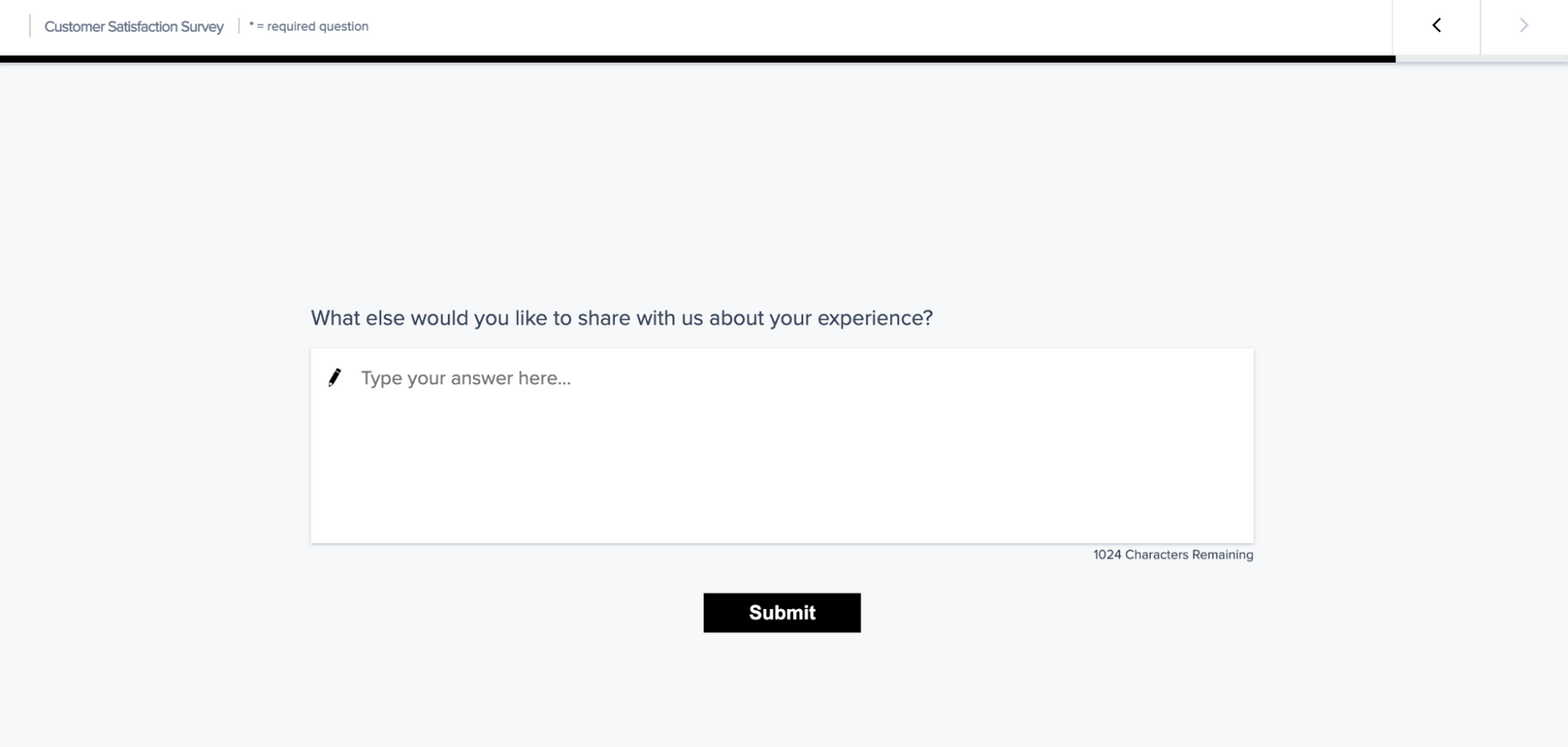
This type of question delivers in-depth voice of customer data about the customer experience -- giving the customer the opportunity to express opinions about the the retail giant in their own words.
2. Closed-ended Questions
Closed-ended questions are the opposite of open-ended questions. The answers that the respondents can give are restricted and you get to define the options that they can choose from.
The positive here is that the customer doesn't have to put much brain power into answering because the responses are already there.
Close-ended questions are also a great way to open a survey and get your customer engaged before you ask them more in-depth questions.
When asking close-ended questions, choices should be kept to a minimum (4 or 5) otherwise your respondents might face a kind of decision paralysis and not respond.
There are a number of different question types which fall into the closed-ended question category. Here is an example of a rating scale question:
How satisfied were you with the attention you received today in our store:
- Very satisfied
- Satisfied
- Unsatisfied
- Neither satisfied nor dissatisfied
- Very dissatisfied
And here is an example of a yes/no question:
Did we resolve your query today?
- Yes
- No
And here is a real life example of a closed-ended question:
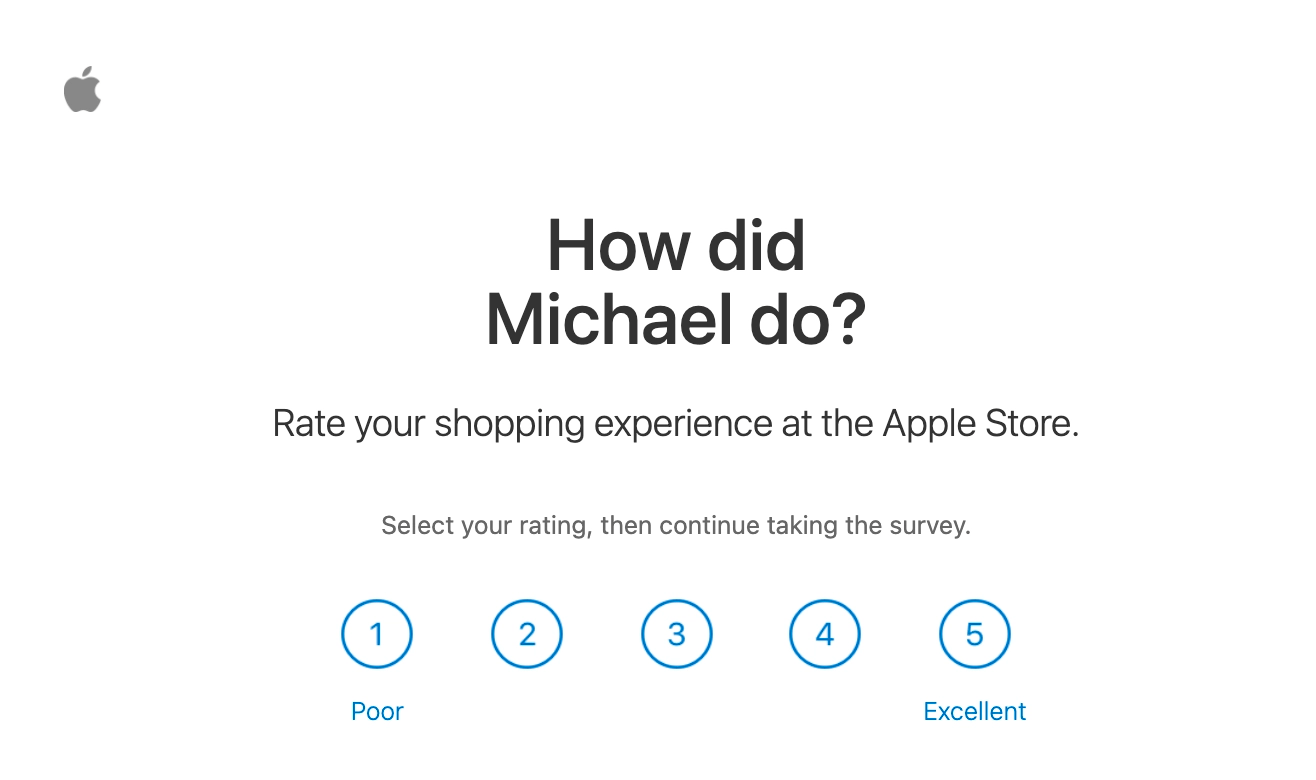
3. Nominal Questions
Nominal questions are a form of closed-ended questions where the respondent is given multiple options to respond with. Some nominal questions even ask the respondent to rank a set of responses in a specific order.
The pros of nominal questions are that they're easy for your respondents to complete and work well when you only have a limited amount of variables.
Where they fall short is when you have a lot of variables and when the respondent's answer falls outside of the options you have given them. This can be remedied by adding a free-form other section as one of the choices.
Here's an example:
What is your favorite soda:
- Coca-Cola
- Coke Zero Sugar
- Sprite
- Fanta
- Other:
Or
What did you enjoy most during your recent visit to our gym?
- The fixed equipment
- The free-weights area
- The changing facilities
- The onsite trainers
- Other:
Here's an example of what a nominal survey would look like in real life:
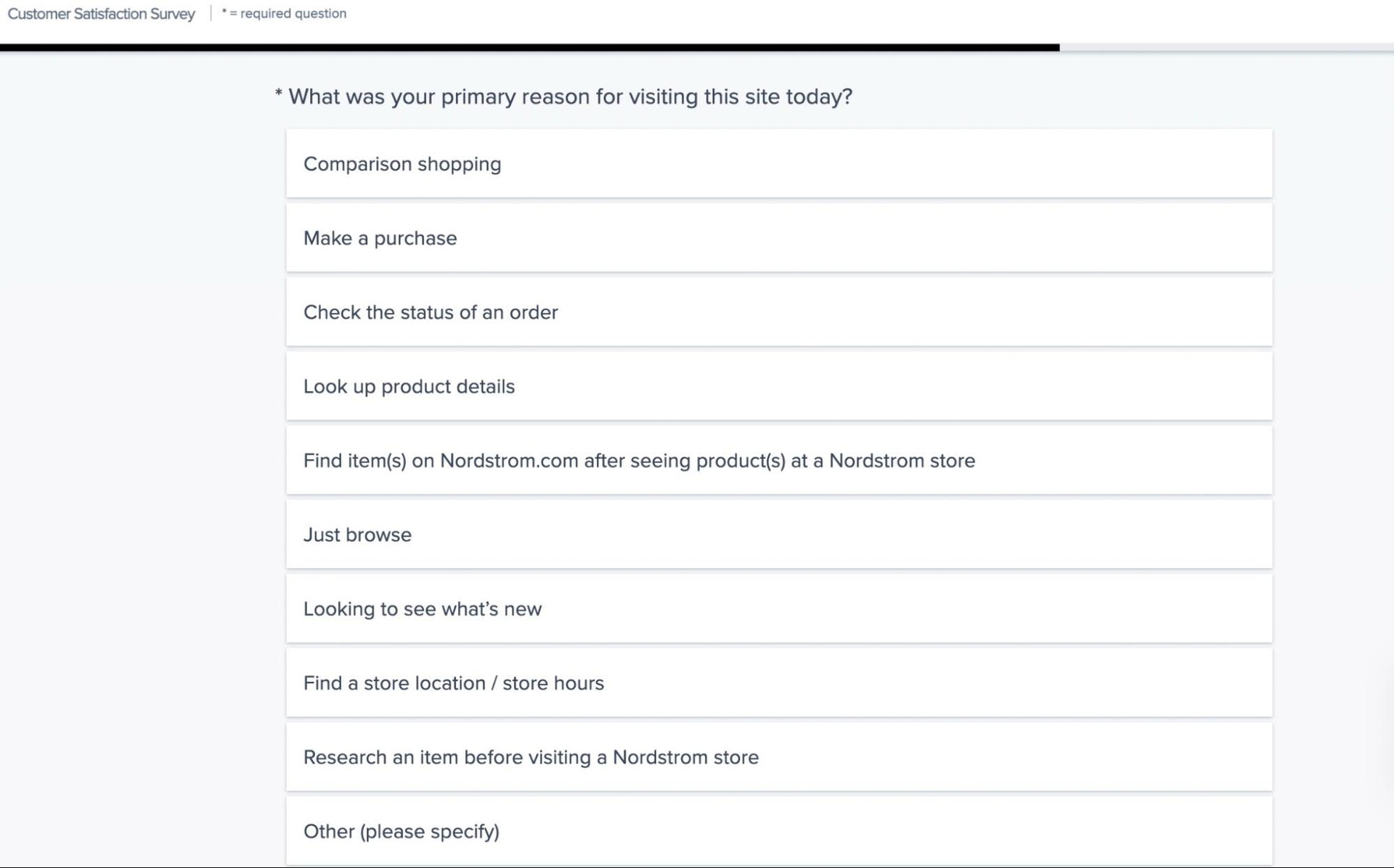
4. Likert Scale Questions
This is a closed-ended question. A Likert scale is one which provides the customer with a rating scale to answer the question.
A Likert scale is most commonly seen in Net Promoter Score (NPS) and Customer Satisfaction Score (CSAT) questions.
Here is an example of how it would look in the case of the CSAT:
How would you rate your satisfaction on a scale of 0-5, with 0 being extremely unsatisfied and 5 being extremely satisfied.
And here is an example of a Likert scale in a Net Promoter Score survey:
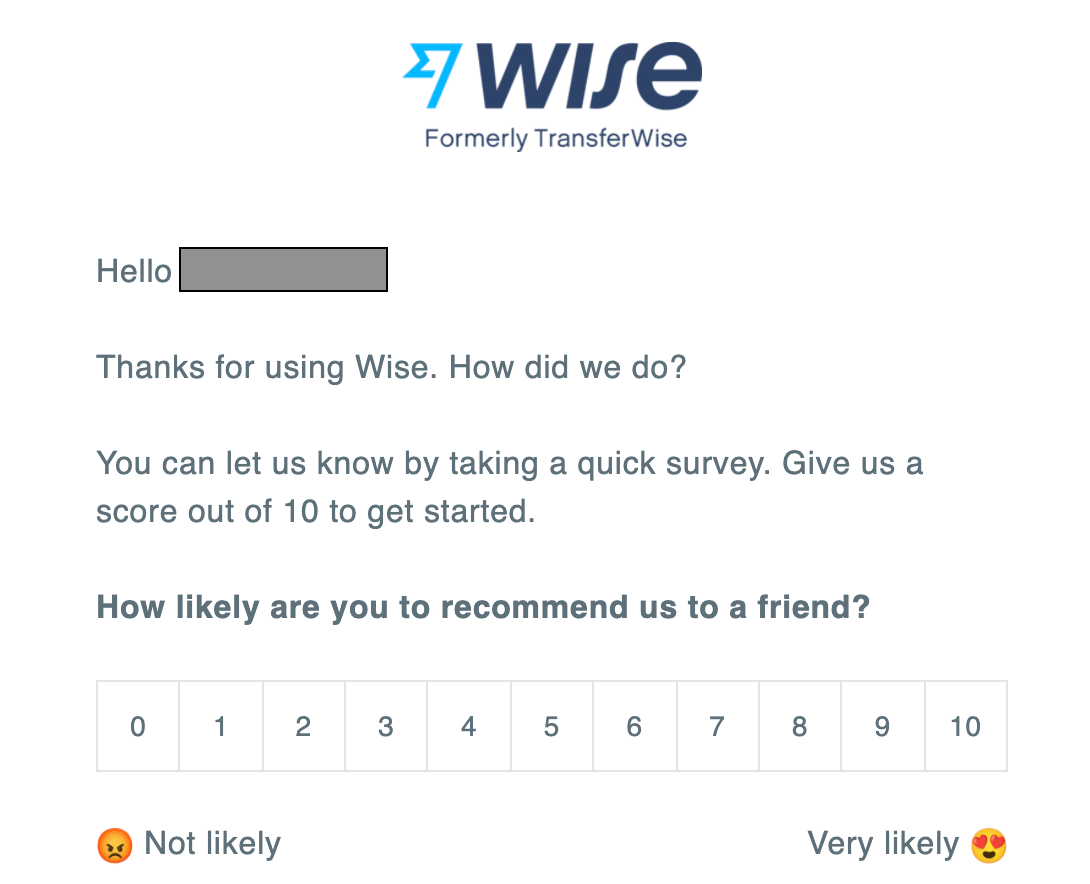
5. Rating scale (Or Ordinal) question
A rating scale, or ordinal question, asks respondents to choose a rating on a numbered scale or from a predetermined list. This allows you to judge their perception of aspects of your business.
Here's an example of a Likert scale survey question:

A Likert scale question is a form of ordinal question but there are many others.
Rating scale questions fall into two categories, these are:
- Unipolar Rating Scale Questions
- Bipolar Rating Scale Questions
Unipolar Rating Scale Questions
Unipolar scales generally ask the respondent to choose between something that is present and something that is missing.
An example of this would be a scale that goes from not at all interested to extremely interested. The interest is what is either present or missing in this case. Very satisfied and not at all satisfied is another example of the two extremes of a unipolar rating scale.
Here's an example where what is present or absent is the likelihood that they will use the product again:
How likely are you to use our product again?
- Very unlikely
- Unlikely
- Neither likely nor unlikely
- Likely
- Very likely
Bipolar Rating Scale Questions
Bipolar rating scale questions, on the other hand, relate to how respondents feel in regards to a particular statement. An example of this is 'strongly disagree' and 'strongly agree'.
This is also an example of a bipolar survey question:
The process for returning your purchase was straightforward.
- Strongly agree
- Agree
- Neither agree nor disagree
- Disagree
- Strongly disagree
6. 'Yes' or 'No' Questions
These are simple questions that are easy for respondents to complete. However, they don't tend to yield many insights so you should always follow them up with an open-ended question. Some ways this question can be used are as follows:
Did our customer service representative solve your query today? Yes/No Were you happy with your purchase of [product/service]? Yes/No
Here you can see how retailer Target embed a quick yes/no question onto their site while also adding open-ended questions.
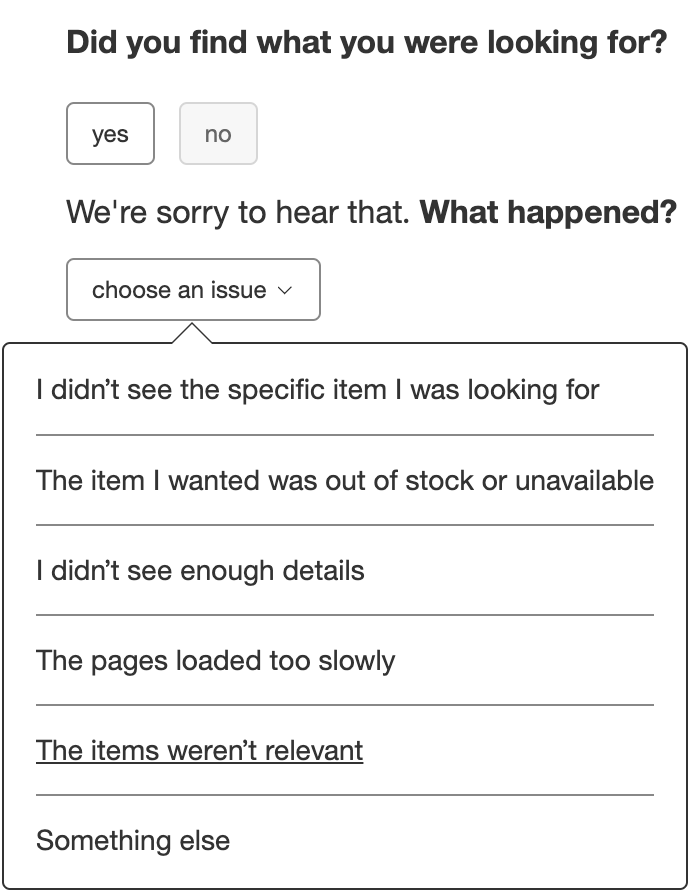
In the case that the customer chooses no, they receive a close-ended, nominal question. When they answer this question, they're also given the chance to expand on their answer in a free-text box.
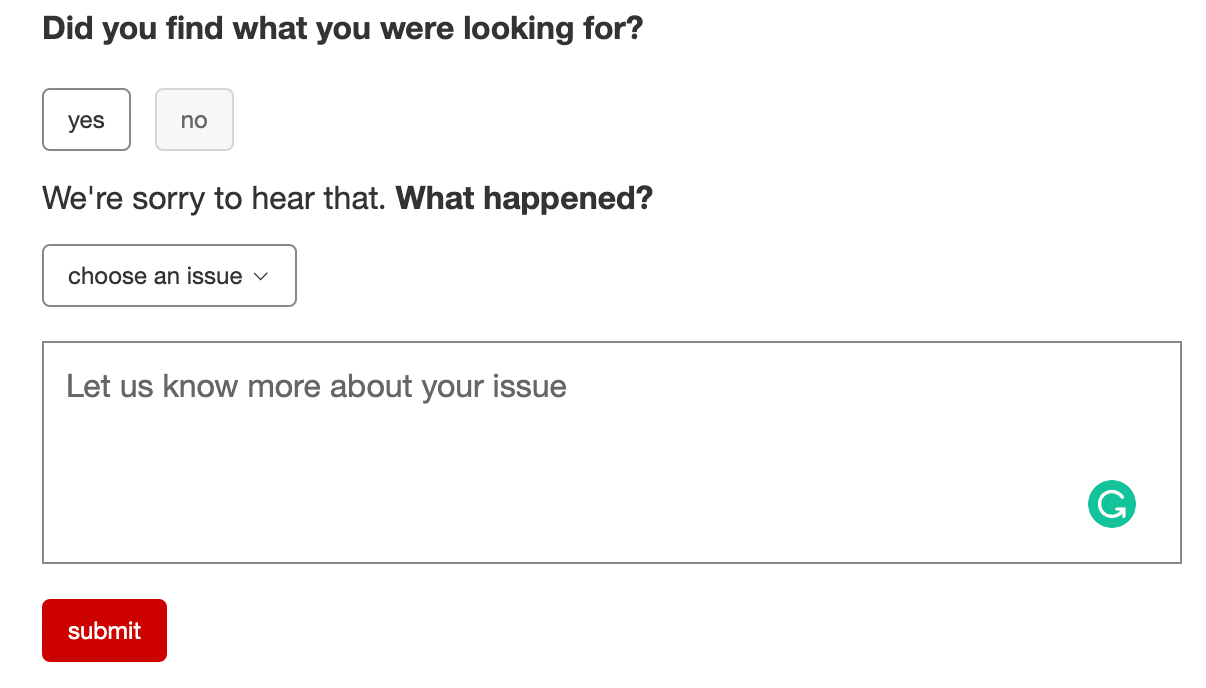
They also added a free-text box in the case that the customer chooses yes, with the language in the text box changing to reflect the respondents initial response:
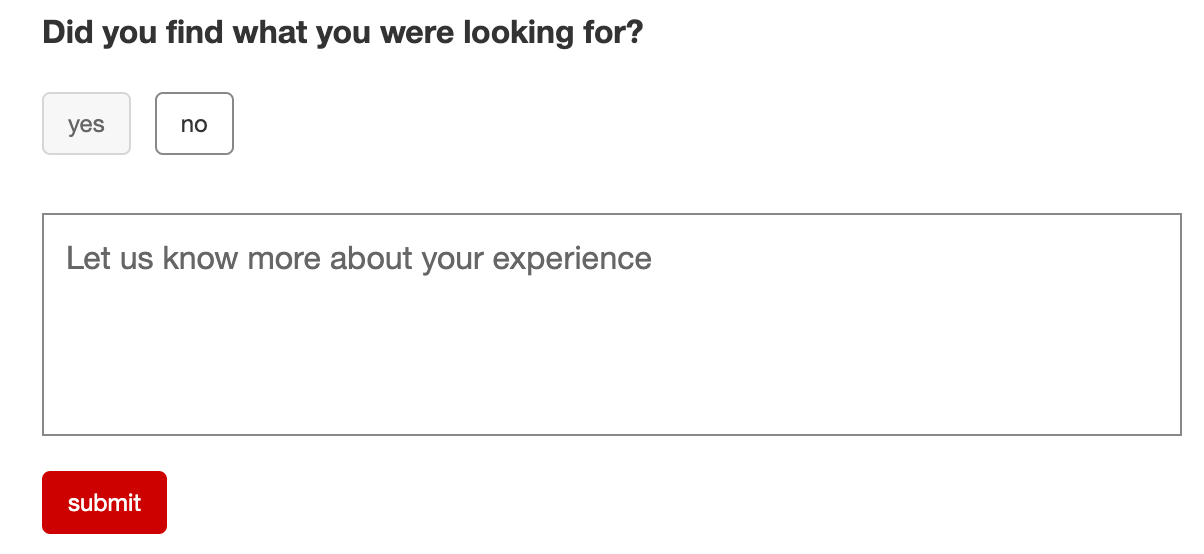
7. Demographic Survey Questions
Demographic questions are any kind of question that helps you paint a picture of who your customer or target audience is. This is especially useful information when you're trying to build a buyer persona.
Some examples of demographic survey questions include asking for:
- Gender
- Age
- Place of residence
- Marital status
- Employment
Here's an example of a survey from the email newsletter site, Morning Brew in which they ask a few demographic questions to get to know their audience better.
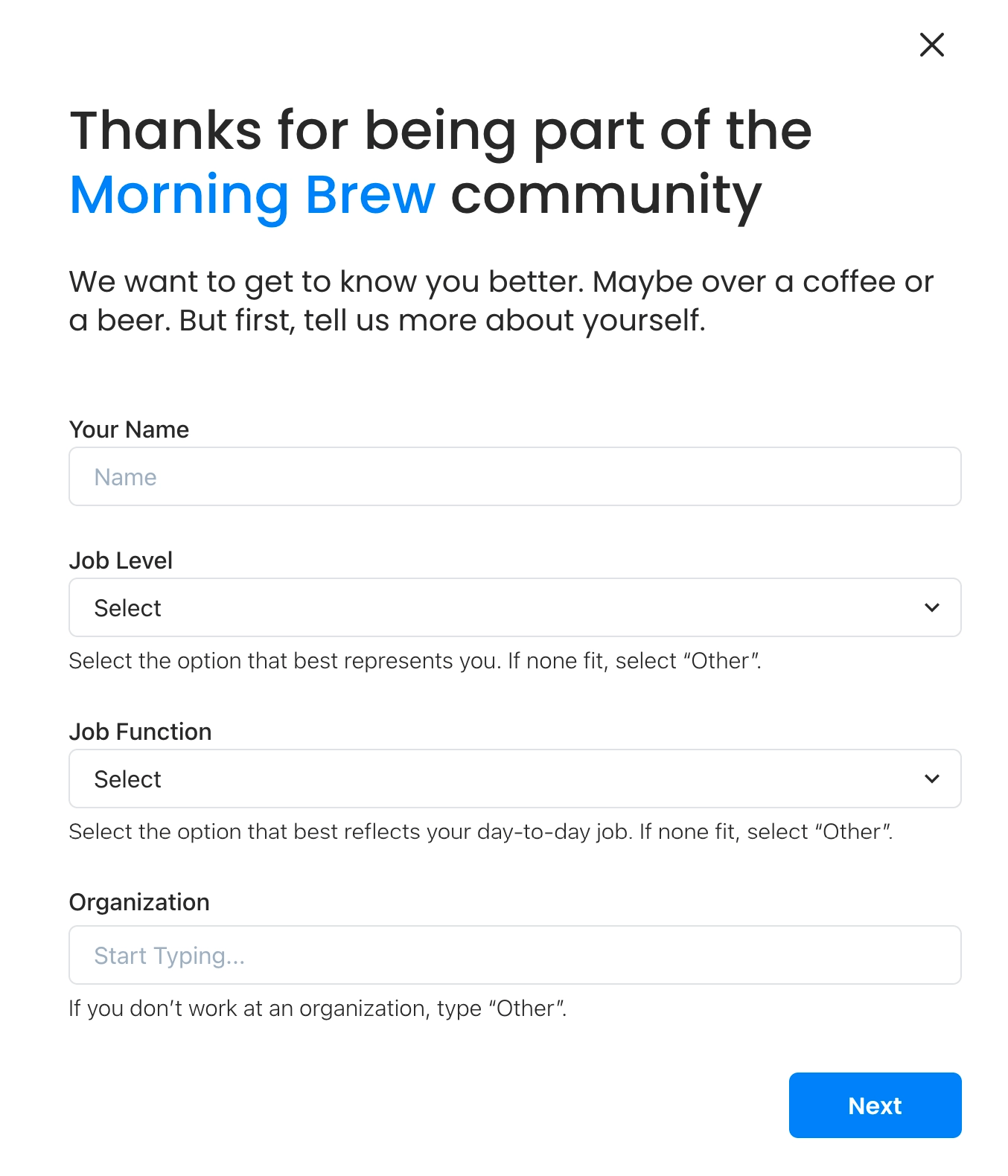
Check out this guide for even more examples of great survey questions.
How To Write Great Survey Questions
To maximize the quality responses you get back, you should follow these survey writing best practices. It's also worth paying attention to what you shouldn't do.
The Dos and Don'ts of Asking Good Survey Questions
DO
Think like your customers. Imagine what it is they might be going through and how you can best communicate with them. If it's their first time purchasing your product a follow-up survey asking if they have any feedback might be helpful. If they've just had a frustrating call with customer service they'll likely prefer a solution-oriented call over an automated email survey.
Time your surveys well. When a survey is specific to a particular interaction it's always best to follow up in a timely way. The customer's experience is likely to be fresh in their minds and they'll be able to provide more accurate, detailed answers. You should also send the survey to them in a format that makes sense, if they're using the app, deliver it there, or if they're on the phone you can add it at the end of the call.
Speak their language. Avoid any kind of confusing jargon or buzzwords in your surveys and stick to plain language. You should also keep the tone in line with the rest of your marketing materials so that it feels familiar and consistent.
Start simple. You don't want to ask too much of your customer in your first question. Ease them into the survey with an easy-to-understand and low-effort question, this way there's more chance that they'll keep going.
Test your surveys. Send your survey out to a select group and see if your questions achieve the results you are hoping for. It might even help you catch some errors or typos.
Ask both close-ended and open-ended questions. Close-ended questions are easy for customers to complete. They can also act as the perfect lead onto open-ended questions, which return the deepest insights.
DON'T
Ask too many questions. Asking too many questions is a sure fire way to make customers abandon the survey halfway through. This is known as survey fatigue which is when someone gets tired of answering questions and stops completing the survey halfway through.
Ask loaded questions. This means wording your question so that the respondent is pushed to answer in a way that doesn't reflect their feelings. This might be something like: Why are you happy doing business with us? Your customer might not actually be that happy and you're missing finding out about why they're unhappy when you make assumptions.
Use polar questions. Similar to loaded questions, these questions nudge your respondents in certain ways through their phrasing. They might imply a certain sentiment, i.e. tell us what you like/dislike about our product. This question restricts your customer to commenting on just likes and dislikes when what they feel might not fit into those binary fields.
Ask two questions in one. This could look like: How would you rate your satisfaction with our product and customer service? This is confusing for your customer as they don't know which element to answer. It will also lead to bad survey data because you won't be able to accurately analyze survey responses to this question.
Use only questions that elicit "Yes", "No". Yes/no questions restrict what your respondent can tell you and mean less insights. Instead choose a different kind of closed-ended question, follow up with an open-ended question, or rephrase so that you ask an open-ended question without needing the initial close-ended question. For example, instead of asking: Did customer support solve your issue? choose something like: How did you find your customer service experience?
Survey Question Takeaways
The quality of your questions will determine the outcome of your survey and how much it helps you towards meeting your business goals.
Asking good survey questions leads to good business outcomes, it's as simple as that.
However, to get to the insights that lie within your survey data, you'll need to first analyze the results. This can become tricky when you don't have the right tools.
You have thousands of good survey responses, so what's next?
Analyzing the quantitative data from your closed-end questions can usually be done manually with simple tools like excel.
However, in order to process thousands of open-ended responses, you'll need automated survey analysis tools like MonkeyLearn.
MonkeyLearn uses the power of AI to analyze huge amounts of data in seconds. All you need is over 10,000 survey responses to get started. Why? Because AI tools need data to learn from to make accurate predictions.
Once you're ready to get started, choose from a series of no-code text analysis templates that run your survey data through pre-set text analysis techniques.
Sign up for your free demo today to see how MonkeyLearn can make analyzing your open-ended survey results a breeze.

Rachel Wolff
February 15th, 2022






